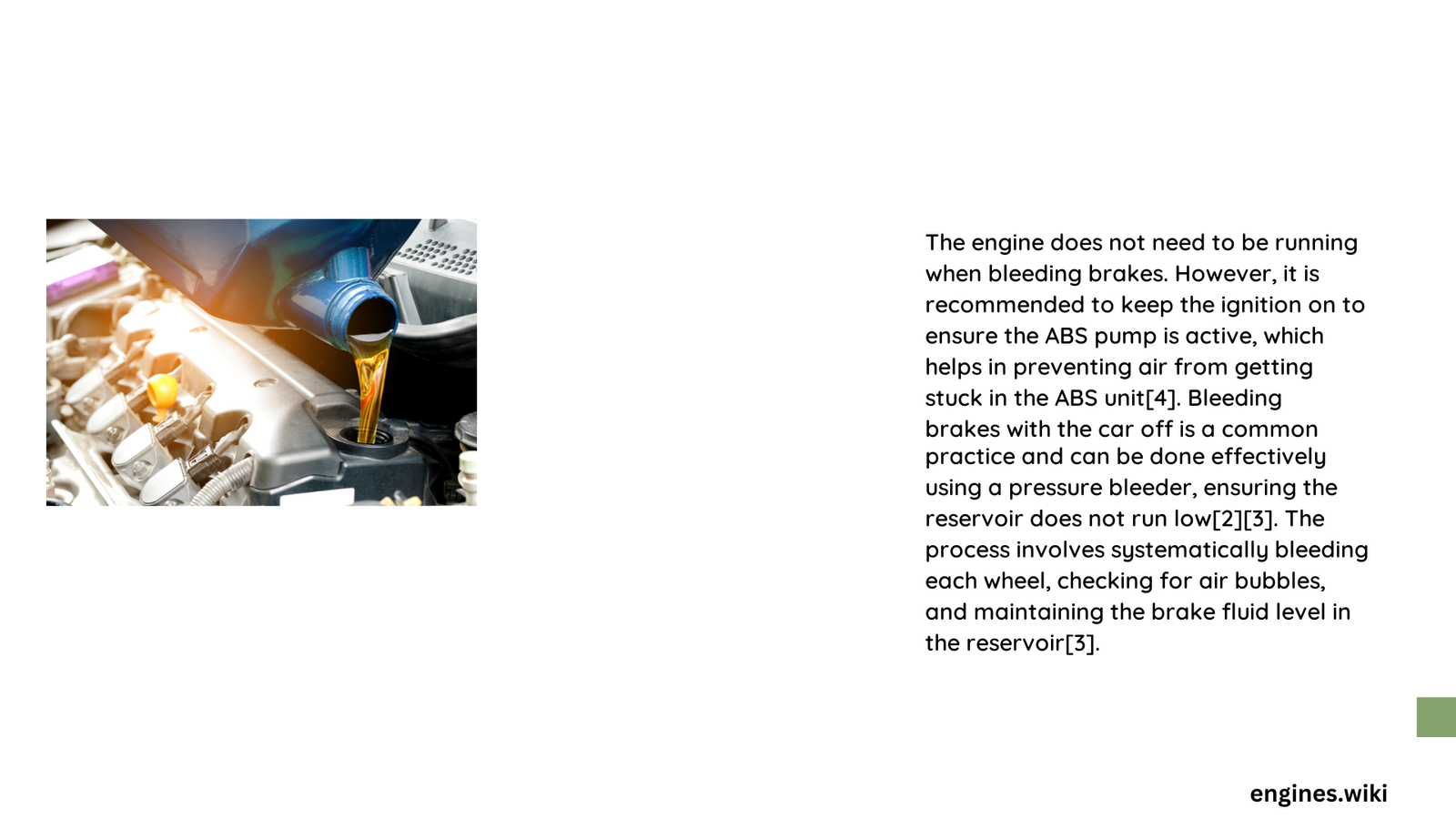Brake bleeding is a critical maintenance procedure that ensures your vehicle’s braking system operates safely and efficiently. When addressing the question of whether the engine should be running during this process, automotive experts unanimously recommend keeping the engine off to maintain precise control, prevent air introduction, and ensure consistent brake fluid flow.
Why Keep the Engine Off During Brake Bleeding?
What Happens When Engine Runs During Brake Bleeding?
Running the engine during brake bleeding can introduce several complications:
- Pressure Inconsistencies
- Engine power assist creates unpredictable fluid pressure
- Increases risk of air bubble introduction
-
Makes precise fluid movement challenging
-
Safety Risks
- Potential for unexpected pedal movement
- Reduced control over brake system
- Higher chance of mechanical errors
How Does Engine Status Affect Brake Fluid Dynamics?
| Engine Status | Fluid Pressure | Air Bubble Risk | Control Level |
|---|---|---|---|
| Off | Consistent | Low | High |
| Running | Variable | High | Low |
What Are the Technical Implications?
When bleeding brakes, the primary objectives include:
– Removing air bubbles from hydraulic lines
– Ensuring consistent brake fluid pressure
– Maintaining precise system control
Key Considerations for Brake Bleeding
- Equipment Needed:
- Clear bleeding hoses
- Brake fluid collection container
- Wrench for bleed valves
- Jack and jack stands
- Fresh brake fluid
What Techniques Ensure Effective Brake Bleeding?
Recommended Bleeding Methods
- Manual Pump and Hold
- One person pumps brake pedal
- Another opens bleed valve
- Performed with engine off
-
Allows controlled fluid movement
-
Vacuum Extraction
- Uses specialized vacuum pump
- Removes air systematically
- Requires engine to be off
- Provides consistent pressure
Can Running Engine Ever Be Acceptable?
Rare Exceptions:
– Some advanced diagnostic procedures
– Specific manufacturer recommendations
– Professional mechanic scenarios
What Risks Emerge from Improper Bleeding?
Potential consequences of incorrect brake bleeding include:
– Spongy brake pedal
– Reduced braking performance
– Potential brake system failure
– Compromised vehicle safety
Professional Recommendations

Automotive experts consistently advise:
– Always keep engine off during brake bleeding
– Maintain a clean, organized workspace
– Use fresh, manufacturer-recommended brake fluid
– Follow vehicle-specific bleeding procedures
Final Safety Checklist
- ✓ Ensure vehicle is securely supported
- ✓ Wear protective eyewear
- ✓ Have clean rags available
- ✓ Check brake fluid levels frequently
- ✓ Verify no air bubbles in system
Conclusion
Brake bleeding requires precision, patience, and adherence to proper techniques. Keeping the engine off provides the most controlled environment for maintaining your vehicle’s critical braking system.
